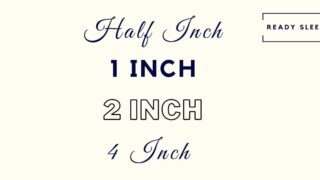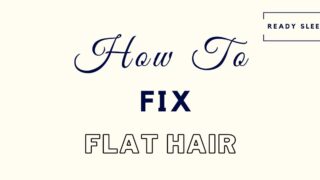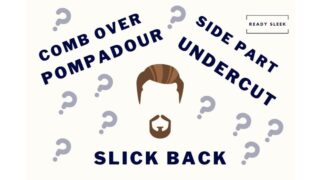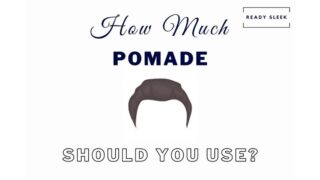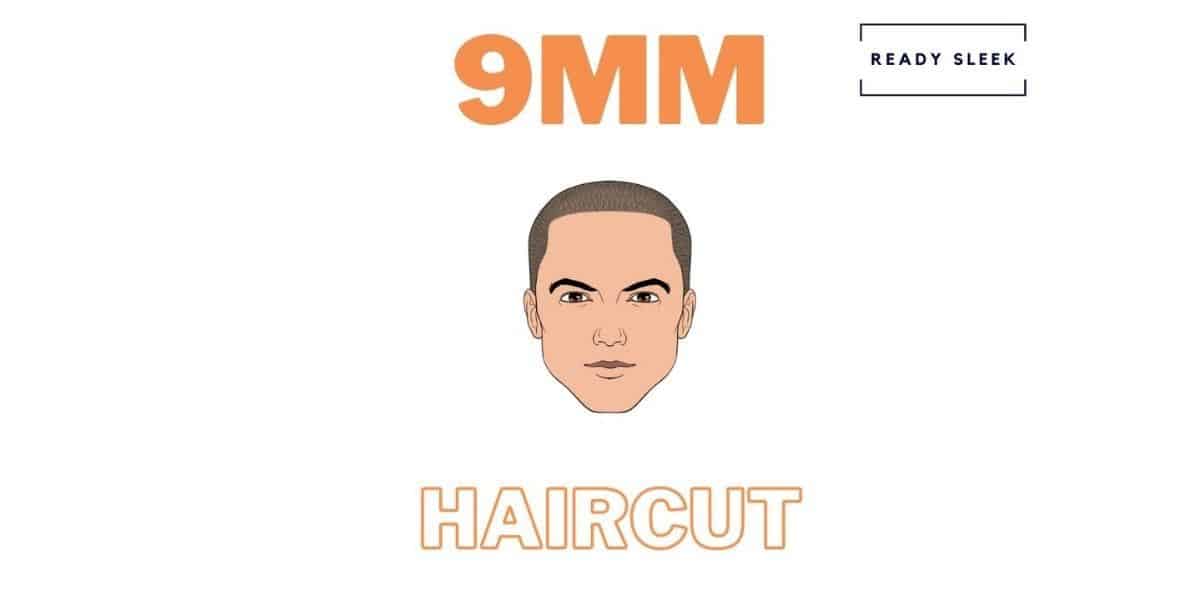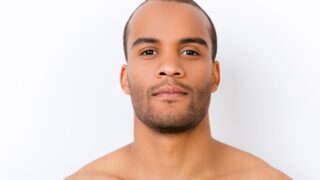While it can be pretty tough to define, you know it when you see it. It may not be as easy to achieve with certain hair types, but these simple tips should help you get flowy hair no matter what.
Let’s get to it.
1. Grow Enough Length
Trying to get flowy hair when it simply isn’t long enough is a waste of time.
You need enough length to get that appearance of movement. That’s what makes it look “flowy”.

It’s when the hair just naturally falls in such a way that it looks like it’s moving if you were to take a still photograph of it.
You could call it “wavy” or “textured”, as well. But ultimately, it’s the appearance of movement that makes it look flowy.
Unfortunately, when the hair is too short, it’s really difficult to get this illusion of movement and also to build texture with it.
The amount of length you need really depends on your hair type. If your hair is thicker, you’ll probably need even longer hair to make it work. It’s easy to create flow with finer hair types.
Where you really want the length is at the front. This is where flowy and wavy hair is most visible and obvious.
So, a good way to check your hair length is by pulling your fringe straight down toward your nose.
In general, you can aim for your hair to reach at least halfway or even all the way down the nose.
Once you reach this point, you’ve really got a good amount of length to build some flow with.
2. Get A Layered Haircut
A “layered” haircut is one in which the hair appears to lie in layers.
In other words, the strands appear to cluster and fall on top of each other in layers.
You get a great sense of strand separation, instead of all of the hair looking like one even layer.
It’s easier to get a flowy finish when the hair is layered and textured. Yes, it’s possible to build texture using hair products.

But getting a layered haircut is the foundation – it’s so important. If you don’t get the right haircut, it makes it less likely that the other tips in this list will work.
Layered hair is less likely to fall flat and more likely to prop itself up in whatever way you style it. It’s especially important when you want volume and waviness, as we do here.
It can be tough letting the stylist know what you really mean by “layered”, as this can mean different things to different people.
Usually, it’s best to show the barber or stylist a photograph of the flowy hairstyle you’re eventually looking to style.
Good ones know how to cut the hair in a way that makes it simpler for you to achieve the finish you want.
A stylist would usually be better than a barber here. Don’t get me wrong – there are going to be some barbers that would do a great job for you with this.
But in general, salons are just better at dealing with longer hair than barbers are.
3. Style While Damp
Ever notice how your hair just has a naturally flowy and wavy appearance to it right after you’ve hopped out of the shower?
Use that to your advantage when styling.
Now, trying to style soaking wet hair isn’t going to be a good idea. In fact, it’s not really possible.
But styling hair while it’s a little damp is a great way to go about it. It’s easier to style and easier to build waves and texture with.
Although the hair will eventually dry anyway, you’ll find that the waviness you managed to create while it was damp is just more likely to stick around because you styled it while damp.
4. Towel Dry While Scrunching
Towel drying doesn’t just have to be a way of drying your hair. It can actually be the first stage of the styling process.
Using the towel to build some texture and mess is a good way to go, as long as you do it the right way.
Sweep the hair to the side you eventually want it to lay and then start using the towel to create some gentle waves.
Use it to gently “scrunch” the hair in parts. Grip some for a few seconds, then release. Do this all over the top.
Take a look at the result – you’ll find that you’ve created a very subtle flowiness to the hair on top before you’ve even started styling it.
5. Sea Salt Spray
Sea salt spray is probably the most underrated hair product out there. So many people are surprised by how much difference such a simple product can make.
It’s a great way to achieve that windswept and beachy waviness with just the right amount of grit to it.
The grittiness makes it more responsive, easier to style, and more likely to stay in place once you have styled it.
It’s usually used as a pre-styler. In other words, it’s a product that’s used before the actual styling begins.
After you’ve towel-dried and scrunched your hair to get those initial waves, spray a light layer of sea salt spray over your hair.
You can choose to let it air dry after this, or you could use a blow-dryer to build some texture.
Blow drying while finger-tousling is a great way to build layering and texture. Doing so after applying sea salt spray just makes the effects even more obvious.
But some people find that allowing the hair to air dry after applying the sea salt spray gives them the flowy finish they want.
It’s worth experimenting with air drying and towel drying to see which one works better for you.
6. Twisting
Sectioning the hair at the front into parts and then twisting it often creates a gentle flowiness that may be exactly what you’re aiming for.
It doesn’t have to be that time-consuming, especially if you’re just focusing on small parts of the hair at the front.
You could do it to all of the hair at the top if you wanted to, but this would, of course, take quite a lot of time.
You can twist sections of the hair around your finger if you’d like, or you could twizzle it into a tighter coil.
Be gentle and don’t overdo it – you don’t want your hair under traction for too long.
Once the hair has been twisted, running a blow dryer with a concentrator nozzle attached up and down the twisted hair is a great way to get the waves to form.
Don’t hold it too close. Stick to medium heat and a medium speed.
Once you release the twist, the hair will have a noticeable wave and flow to it. Sweep it to one side and it’ll have a real sense of movement.
7. Curl Clips
This one is a sort of extended and slightly more time-consuming version of the last.
Curl clips can be used to clip the hair in place once it’s been coiled.
Once again, you’ll want to focus on the hair at the front, splitting it into small sections and twisting/curling it around your finger.
Then, gently fold each curled section back on itself to form a small coil.
Use the curl clip to hold the coil in place.
Then, repeat the process to other sections across the forelock (i.e hair above the forehead).
You could do this all the way back if you wanted to, but the front is really where you want to build that waviness.
Here’s an example of the type of clips you could use (

You could run a blow dryer over the curled sections (concentrator nozzle attached) to really set things in place.
Once again – stick to a medium heat setting and a medium speed. In addition, don’t hold it too close to the hair – 8 inches away is a pretty good principle to stick by.
Once you’ve released the coils, you’ll find that the hair has a sort of effortless flow to it. Waviness that is just more likely to stick around for the day.
It’s a great way to get a waviness to the hair without having to perm it.
8. Use Matte Products
Hair products are great for building texture and waviness, as long as they aren’t overused.
In addition, it’s important to use the right product for the look you’re trying to achieve. Using the wrong product will make it practically impossible.
In general, when you’re looking for a flowy end result, you’ll want some body, texture, and waviness.
You want an airy and light finish – nothing heavy. Heavy products are more likely to weigh the hair down and prevent you from creating the appearance of movement in your hair.
So, stick to light products that don’t weigh the hair down and also allow you to easily build texture with them.
In addition, stick to matte, low shine, or natural finish products.
Examples include hair paste, creams, and clays. Clay can be quite heavy, so is more suitable for those with thicker hair types here.
Avoid heavier and shiny products like pomades and waxes. Gels may be light, but they’re too shiny for this purpose.
The right product is half the battle. You’ll also want to make sure you’re building waviness and texture after applying it.
Using your fingers to do this is usually a lot more effective than using a brush or comb when you’re trying to get a flowy appearance.
Twist, tousle, and create an organized and wavy mess,
A great way to ensure that a “messy” hairstyle still appears intentional and not just like bedhead is to ensure the hair as a whole is swept to one side and that the side part is pretty visible.
It isn’t essential. But doing that ensures that the style will always look intentional and not accidental.
Try these tips out to see which ones do the job for you.
Enjoy.
Ready Sleek founder. Obsessed with casual style and the minimalist approach to building a highly functional wardrobe. Also a fan of classic, vintage hairstyles.

![8 Easy Tips For Getting Flowy Hair [Men’s Guide]](https://www.readysleek.com/wp-content/uploads/2021/10/How-to-get-flowy-hair-720x405.jpg)
